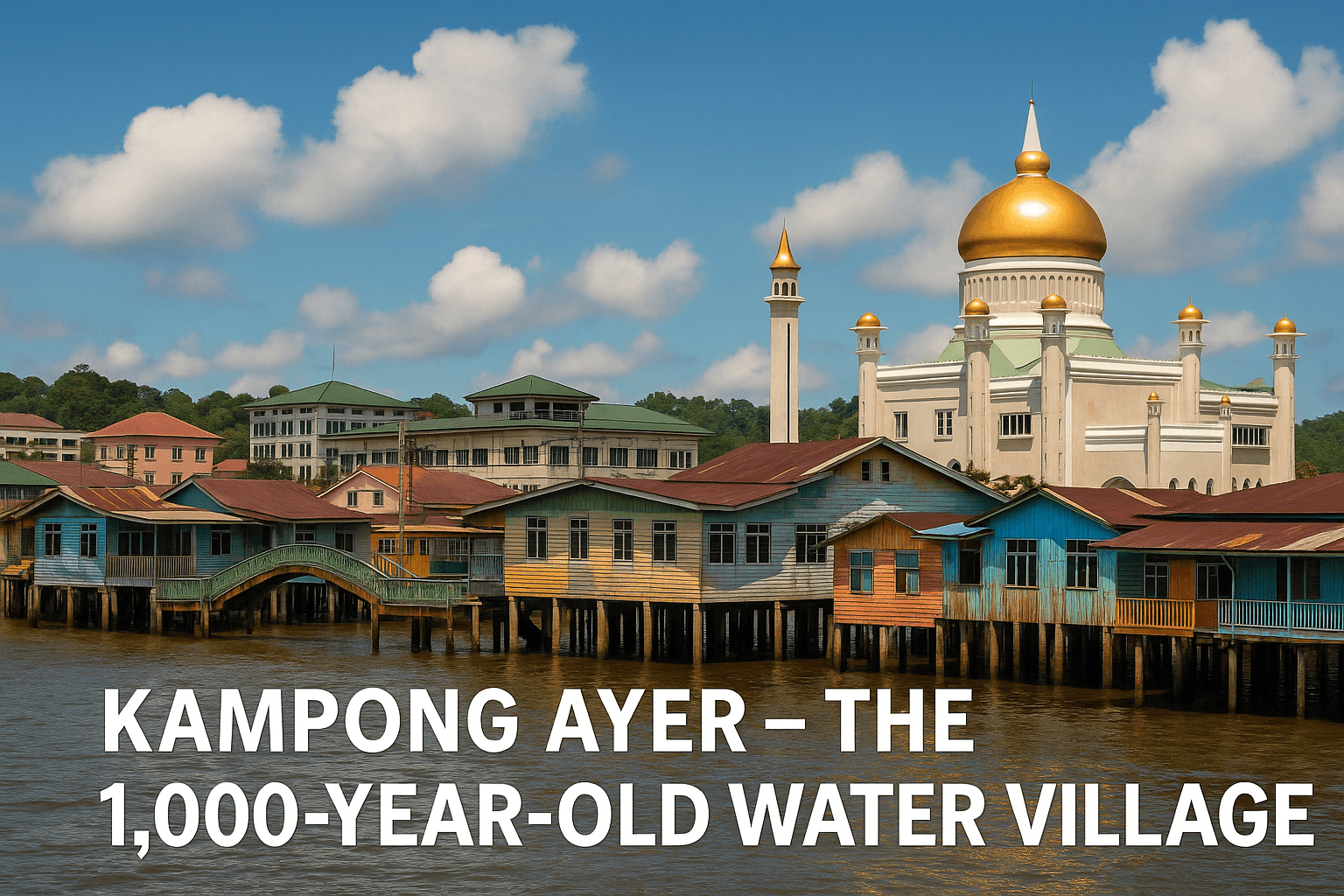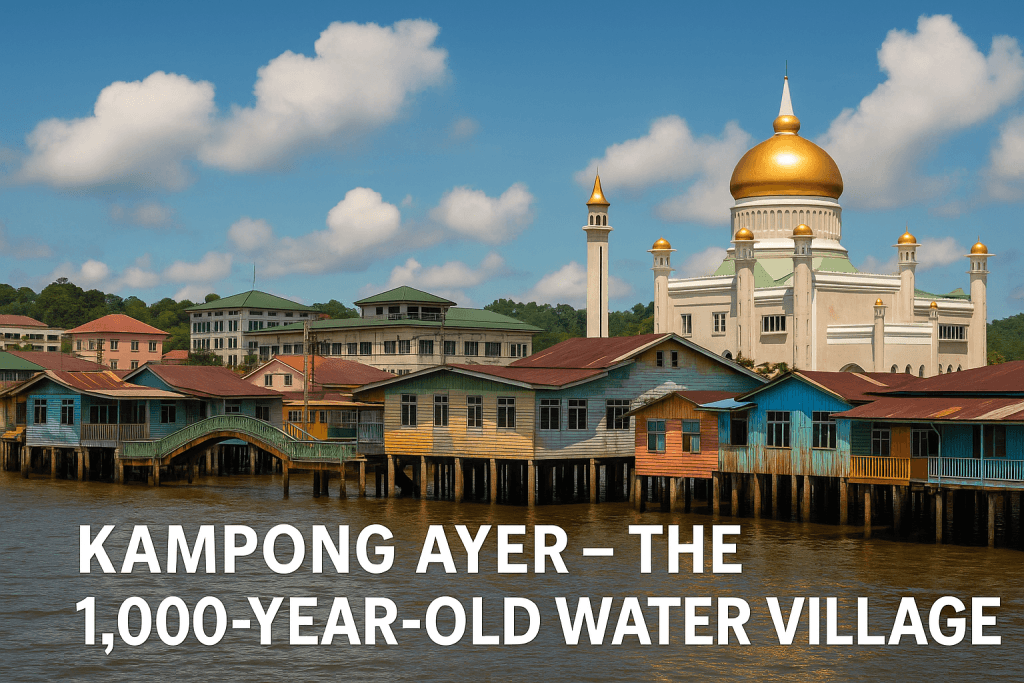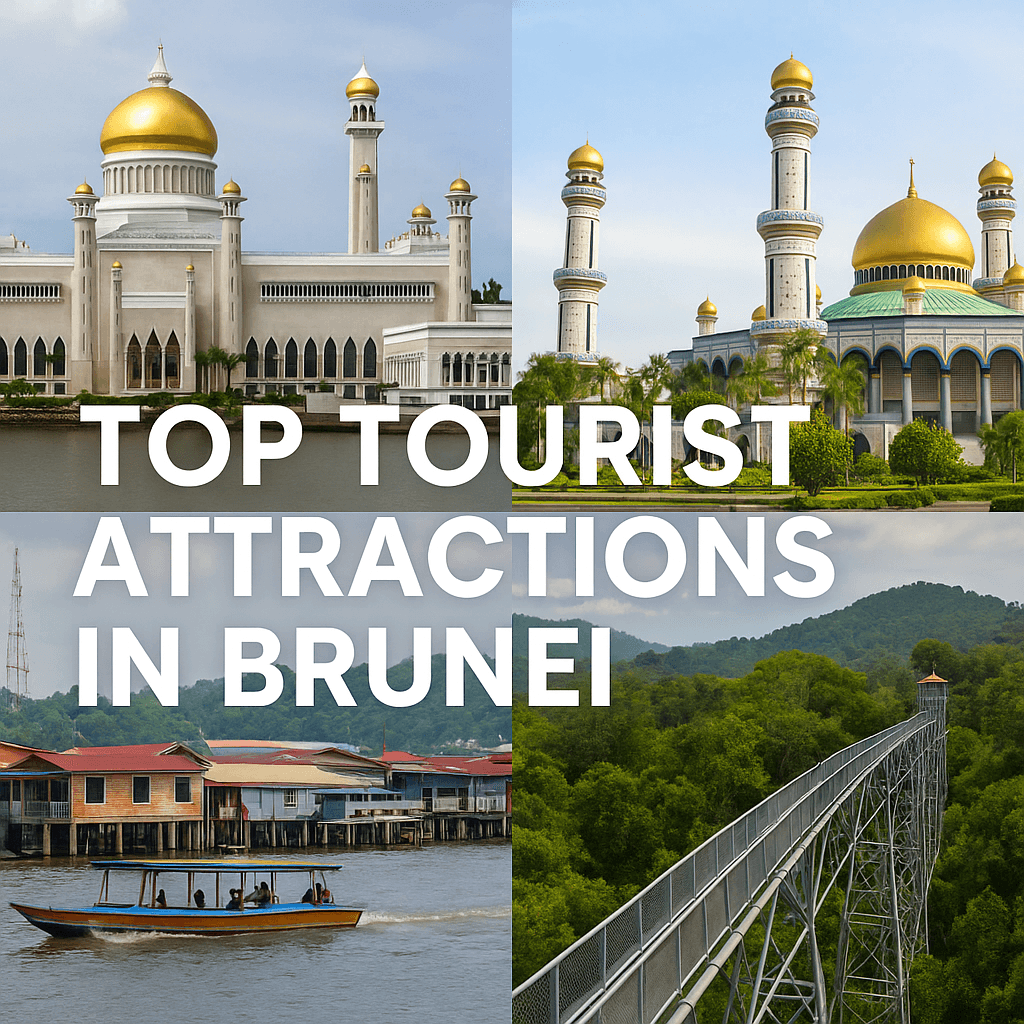In the heart of Bandar Seri Begawan, the capital of Brunei, lies a living heritage that has endured for more than a millennium. Kampong Ayer – The 1,000-Year-Old Water Village is not just a settlement but a symbol of Brunei’s cultural identity and resilience. Spanning the Brunei River with clusters of stilt houses, wooden walkways, and mosques rising above the water, this remarkable community remains one of the largest water villages in the world. Despite rapid modernization and urban growth, Kampong Ayer continues to flourish, safeguarding centuries of tradition while embracing measured adaptation to contemporary life.
This article explores the origins, architecture, daily life, and cultural importance of Kampong Ayer – The 1,000-Year-Old Water Village in exhaustive detail. It examines how this unique settlement has managed to survive across eras, serving as a bridge between the past and the future of Brunei’s society.

The Historical Roots of Kampong Ayer
Ancient Beginnings
The foundation of Kampong Ayer – The 1,000-Year-Old Water Village is deeply tied to Brunei’s maritime culture. Long before the emergence of modern cities, early Malay communities preferred settlements near rivers and seas to facilitate fishing, transportation, and trade. Kampong Ayer is believed to have existed as early as the 10th century, making it not only a historical treasure but also an enduring testimony to the adaptability of the Brunei people.
Importance in the Brunei Sultanate
As the Brunei Sultanate grew into a regional power, Kampong Ayer – The 1,000-Year-Old Water Village became the political, economic, and cultural hub. The Sultan and nobility resided in palaces by the water, while trade with China, the Middle East, and other Southeast Asian states flourished from its riverfront wharves. The settlement was even called the “Venice of the East” by European explorers in the 16th century.
The Architectural Identity of Kampong Ayer
Traditional Stilt Houses
The most striking feature of Kampong Ayer – The 1,000-Year-Old Water Village is its architecture. Homes are constructed on stilts using durable hardwoods, resistant to water and tropical conditions. Elevated platforms protect residents from flooding, while open ventilation keeps interiors cool in the equatorial climate. Roofs are often steep and thatched, although modern upgrades include corrugated metal and tiles.
Wooden Walkways and Bridges
Connecting the village is a maze of wooden walkways and bridges. These paths serve as streets, linking schools, shops, and mosques built entirely above the water. The walkways preserve the communal lifestyle, where neighbors live closely together, strengthening social bonds within the floating community.
Religious and Cultural Buildings
Mosques with elegant domes and minarets rise proudly from the settlement, blending Malay architecture with Islamic design. Schools, markets, and clinics are also part of Kampong Ayer – The 1,000-Year-Old Water Village, ensuring it is a fully functional township on water, not a mere collection of houses.
The Social Fabric of the Floating Community
Daily Life and Occupations
Life in Kampong Ayer – The 1,000-Year-Old Water Village revolves around the river. Fishing, boat making, and small-scale trade remain core activities, although many residents now work in Bandar Seri Begawan while continuing to live in the village. Families still rely on water taxis, which serve as the equivalent of city buses, ferrying passengers across the Brunei River.
Education and Community Spirit
Several schools operate within the water village, ensuring younger generations receive formal education while growing up with a strong sense of heritage. The close-knit environment nurtures communal values, where families share resources and celebrate traditions together.
Kampong Ayer as a Symbol of Heritage
Preserving Malay Identity
For Brunei, Kampong Ayer – The 1,000-Year-Old Water Village is not just a settlement; it is the living heart of Malay culture. The architectural style, language, and traditions preserved here reflect the essence of Brunei’s national identity. Songs, folktales, and crafts passed down within the village continue to keep the Malay spirit alive.
Influence on Brunei’s Tourism
Kampong Ayer is a major attraction for travelers, drawing those who wish to witness a vibrant water community firsthand. Visitors are often captivated by the intricate stilt houses, lively markets, and the balance between tradition and modernity. Tourism plays a role in sustaining the settlement, providing income and global recognition.
The Role of Modernization
Infrastructure Developments
Over the past decades, Kampong Ayer – The 1,000-Year-Old Water Village has undergone significant infrastructure improvements. Electricity, piped water, internet access, and waste management systems have been integrated while preserving traditional aesthetics. Modern materials are now used alongside hardwood to strengthen the houses against natural wear.
Balancing Tradition with Progress
Despite modernization, residents remain protective of their heritage. While younger generations are attracted to urban apartments, many families choose to preserve their ancestral homes on the river. Government initiatives aim to conserve the cultural legacy while ensuring safe living standards.
Cultural Practices and Festivals
Life in Kampong Ayer – The 1,000-Year-Old Water Village is enriched with cultural practices tied to Islam and Malay customs. Religious festivals such as Hari Raya Aidilfitri transform the settlement into a lively hub of decoration, food sharing, and prayer. Weddings, community feasts, and boat races reinforce cultural unity and showcase Brunei’s heritage to the world.
Challenges Facing Kampong Ayer
Migration and Population Decline
One of the challenges is the gradual decline in population. Many families migrate to land-based housing for convenience and perceived modernity. This threatens the continuity of Kampong Ayer – The 1,000-Year-Old Water Village as a vibrant community.
Environmental Pressures
Pollution, river erosion, and climate change pose risks to the settlement. Maintaining clean water and managing waste are constant struggles. However, community and government efforts are ongoing to ensure environmental sustainability.
Kampong Ayer in Literature and Global Awareness
Writers, historians, and explorers have long been fascinated by Kampong Ayer – The 1,000-Year-Old Water Village. From European travelers who marveled at its scale in the 16th century to modern documentaries, the village has become a symbol of cultural resilience. Its reputation as the “Venice of the East” continues to inspire global admiration.
The Future of the Water Village
The future of Kampong Ayer – The 1,000-Year-Old Water Village depends on balancing preservation with innovation. Educational programs, cultural exhibitions, and eco-tourism can help sustain its relevance. By instilling pride in younger generations and promoting sustainable development, Kampong Ayer can thrive for centuries to come.
Conclusion
Kampong Ayer – The 1,000-Year-Old Water Village stands as one of the most extraordinary human settlements in the world. It embodies the spirit of Brunei, showcasing the seamless union of tradition, community, and cultural resilience. While modernization presents challenges, Kampong Ayer remains a living monument to a way of life that has endured for a millennium. Its future rests in the hands of those who recognize its unique value, ensuring that the waters of Brunei continue to cradle this floating treasure for generations to come.


